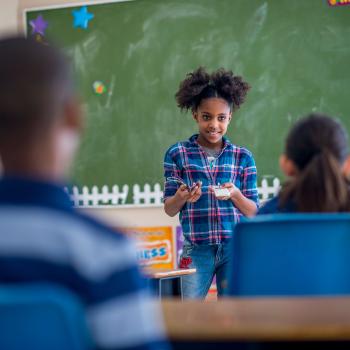Vote for Me! Developing, Writing, and Evaluating Persuasive Speeches

To deliver an effective persuasive speech, students must formulate logical arguments and back them up with examples. In this lesson, students will study political campaign speeches to explore the characteristics of effective persuasive speechwriting and oral argument. While using an online tutorial and looking at examples, students learn what makes a strong speech. A second online tool helps them learn how to formulate a persuasive argument. Students then apply this information in two ways: by writing their own speeches and evaluating others'.
Featured Resources
ReadWriteThink Persuasion Map: Use this interactive tool for any lesson in which students need to create a piece of persuasive writing.
From Theory to Practice
- Persuasive writing can take many forms including essays, letters to the editor, classified advertisements, and speeches.
- Students should examine the various ways persuasion is used in everyday life before they begin writing their own persuasive pieces.
Common Core Standards
This resource has been aligned to the Common Core State Standards for states in which they have been adopted. If a state does not appear in the drop-down, CCSS alignments are forthcoming.
State Standards
This lesson has been aligned to standards in the following states. If a state does not appear in the drop-down, standard alignments are not currently available for that state.
NCTE/IRA National Standards for the English Language Arts
- 4. Students adjust their use of spoken, written, and visual language (e.g., conventions, style, vocabulary) to communicate effectively with a variety of audiences and for different purposes.
- 5. Students employ a wide range of strategies as they write and use different writing process elements appropriately to communicate with different audiences for a variety of purposes.
- 8. Students use a variety of technological and information resources (e.g., libraries, databases, computer networks, video) to gather and synthesize information and to create and communicate knowledge.
- 11. Students participate as knowledgeable, reflective, creative, and critical members of a variety of literacy communities.
- 12. Students use spoken, written, and visual language to accomplish their own purposes (e.g., for learning, enjoyment, persuasion, and the exchange of information).
Materials and Technology
- Computers with Internet access


